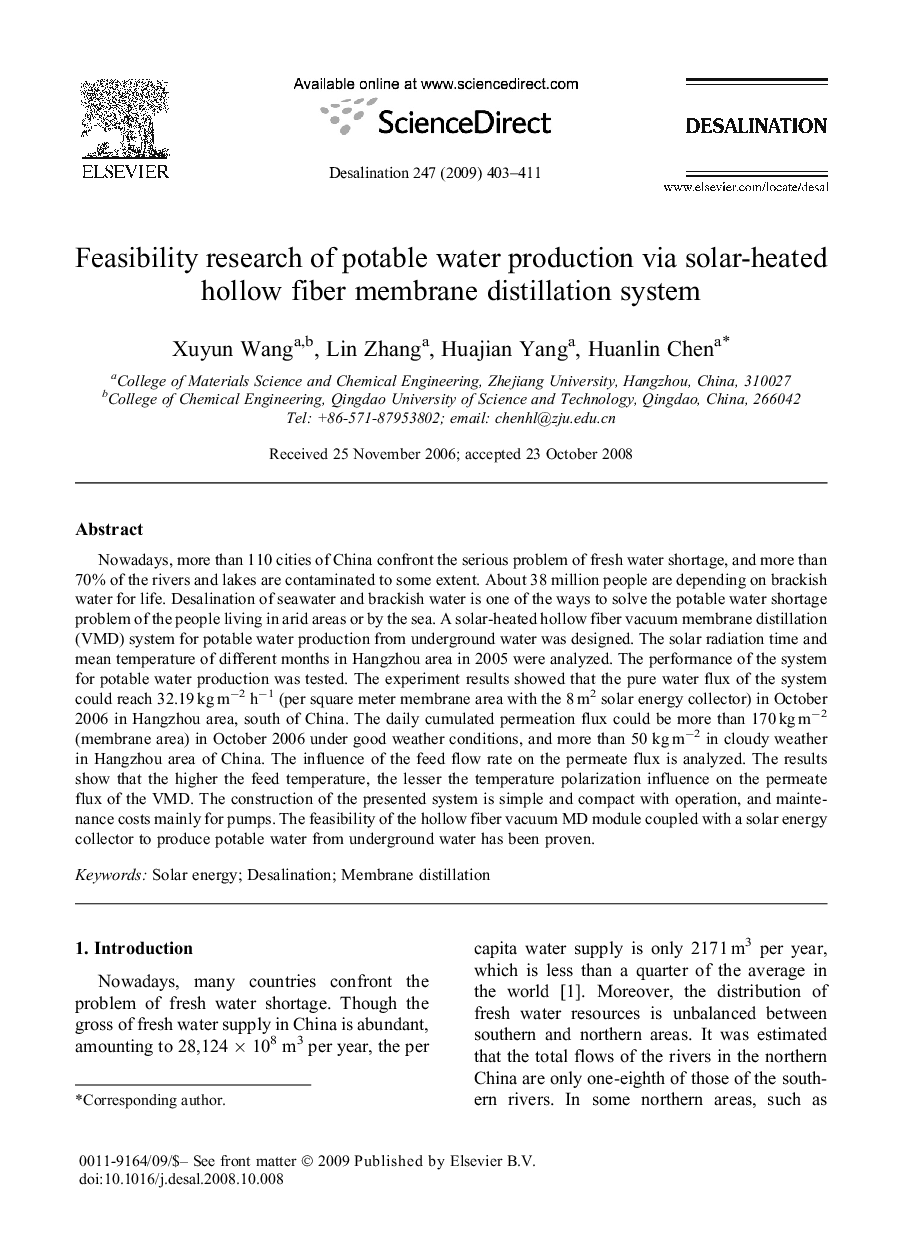| Article ID | Journal | Published Year | Pages | File Type |
|---|---|---|---|---|
| 626554 | Desalination | 2009 | 9 Pages |
Nowadays, more than 110 cities of China confront the serious problem of fresh water shortage, and more than 70% of the rivers and lakes are contaminated to some extent. About 38 million people are depending on brackish water for life. Desalination of seawater and brackish water is one of the ways to solve the potable water shortage problem of the people living in arid areas or by the sea. A solar-heated hollow fiber vacuum membrane distillation (VMD) system for potable water production from underground water was designed. The solar radiation time and mean temperature of different months in Hangzhou area in 2005 were analyzed. The performance of the system for potable water production was tested. The experiment results showed that the pure water flux of the system could reach 32.19 kgm−2 h−1 (per square meter membrane area with the 8m2 solar energy collector) in October 2006 in Hangzhou area, south of China. The daily cumulated permeation flux could be more than 170 kgm−2 (membrane area) in October 2006 under good weather conditions, and more than 50 kgm−2 in cloudy weather in Hangzhou area of China. The influence of the feed flow rate on the permeate flux is analyzed. The results show that the higher the feed temperature, the lesser the temperature polarization influence on the permeate flux of the VMD. The construction of the presented system is simple and compact with operation, and maintenance costs mainly for pumps. The feasibility of the hollow fiber vacuum MD module coupled with a solar energy collector to produce potable water from underground water has been proven.
